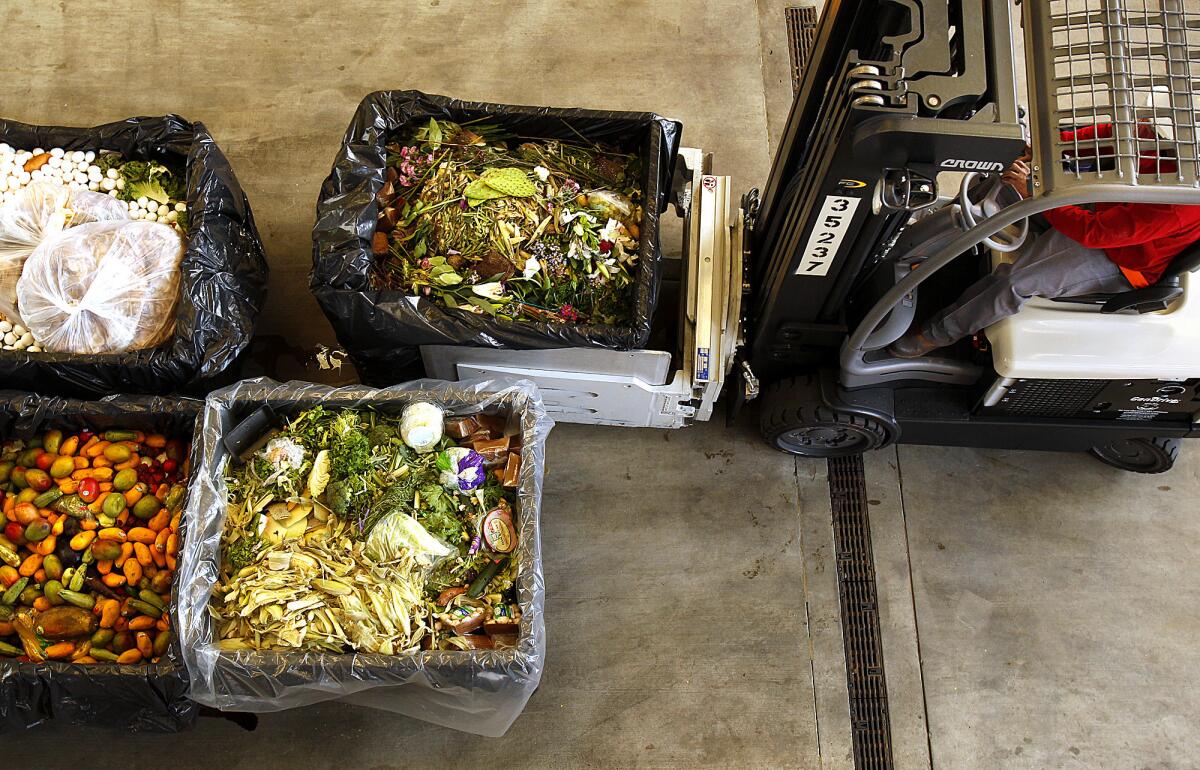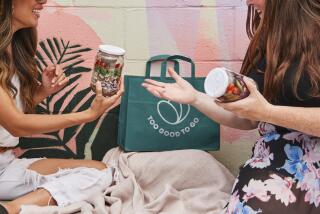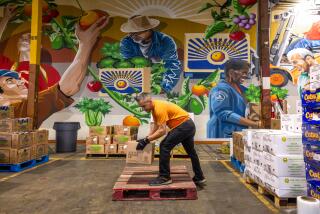Kroger turns spoiled food into electricity; how do you reduce waste?

As supermarkets try to figure out how to cut down on waste and experiment with alternative forms of energy, Kroger Co. says it’s doing both simultaneously by turning landfill-bound organic matter into electricity that powers its stores, The Times’ Tiffany Hsu reports.
An August report from the Natural Resources Defense Council found that 40% of food in the U.S. goes uneaten. When that 20 pounds of food per person per month ends up in landfills, it contributes to 25% of the country’s methane emissions.
The technology Kroger is using that turns all that passed-over fruit, expired milk and stale bread into clean electricity is known as an anaerobic digester system. There’s one in Compton that serves 359 Southern California stores.
But of course, grocery stores and restaurants aren’t the only places where food goes bad – that can happen at home in your refrigerator. So how do you deal with it?
One habit I picked up from my mom is freezing overripe bananas. They can later be combined with milk and vanilla ice cream to make banana milkshakes. They can also be used to make banana bread, says The Times’ Test Kitchen Director Noelle Carter, who also has a few other tips for preventing food waste at home.
“Go to the store with a list of what you plan to make for the week,” she says. “You won’t be as tempted to buy more than you need, and there’s less potential for waste.”
Once you get home, make sure your food is stored properly. If you’re not going to use meat in one or two days, freeze it. If you open a can of chicken broth but don’t use the whole thing, label it with the date you opened it. Extra broth – and other liquids and purees – can be frozen in ice cube trays. Freeze what you don’t use right away, then use as needed; this is perfect whether you’re thawing broth for soups, or want frozen fruit puree for cocktails.
One method Carter says the Test Kitchen uses is known as FIFO – first in, first out. Make sure you’re finishing up your older products before you use newer ones.
If you notice food on the verge of going bad, that doesn’t mean it has to go to waste. Like with the bananas, there are options.
You can freeze bread and later use it for breadcrumbs or croutons. Consider classic preservation methods – like canning, drying or pickling – for vegetables or fruits. You can also juice and freeze until needed. Many fruits and vegetables can be frozen. Clean and spread items, like berries, on a sheet pan and place in the freezer (to keep from clumping); once frozen, store the items to a sealable bag so they don’t take up much room in the freezer.
So what works, or what doesn’t, when it comes to cutting down on food waste in your home? Tell us in the comments below or by emailing laura.davis@latimes.com. We look forward to reading your advice!
ALSO:
Eating bugs: Would you dine on cicadas? Crickets? Buttered beetles?
Smugglers provide KFC delivery to Gaza Strip; they advertise on Facebook
Sriracha hot sauce invades pop culture: For $180, you can wear it on your feet
More to Read
Eat your way across L.A.
Get our weekly Tasting Notes newsletter for reviews, news and more.
You may occasionally receive promotional content from the Los Angeles Times.











